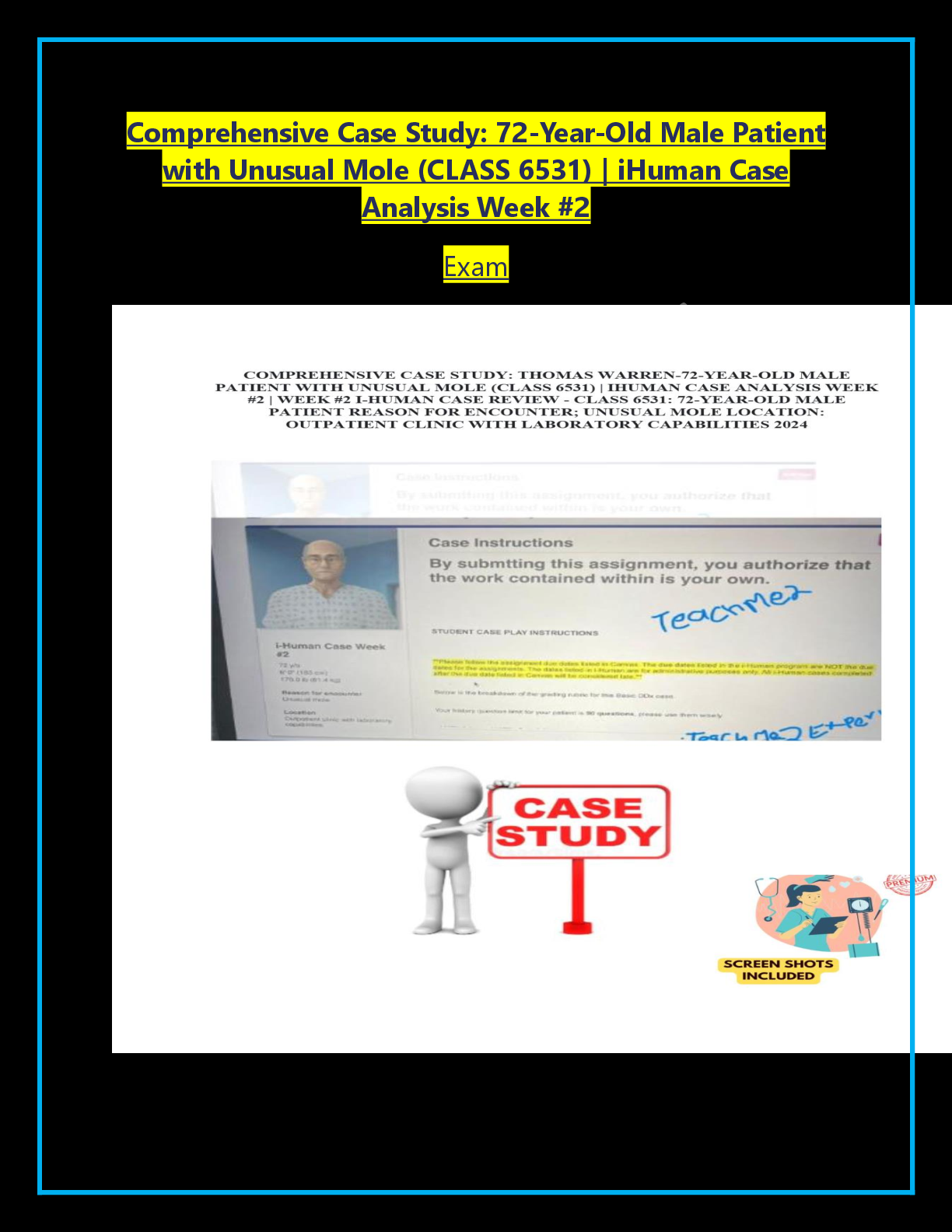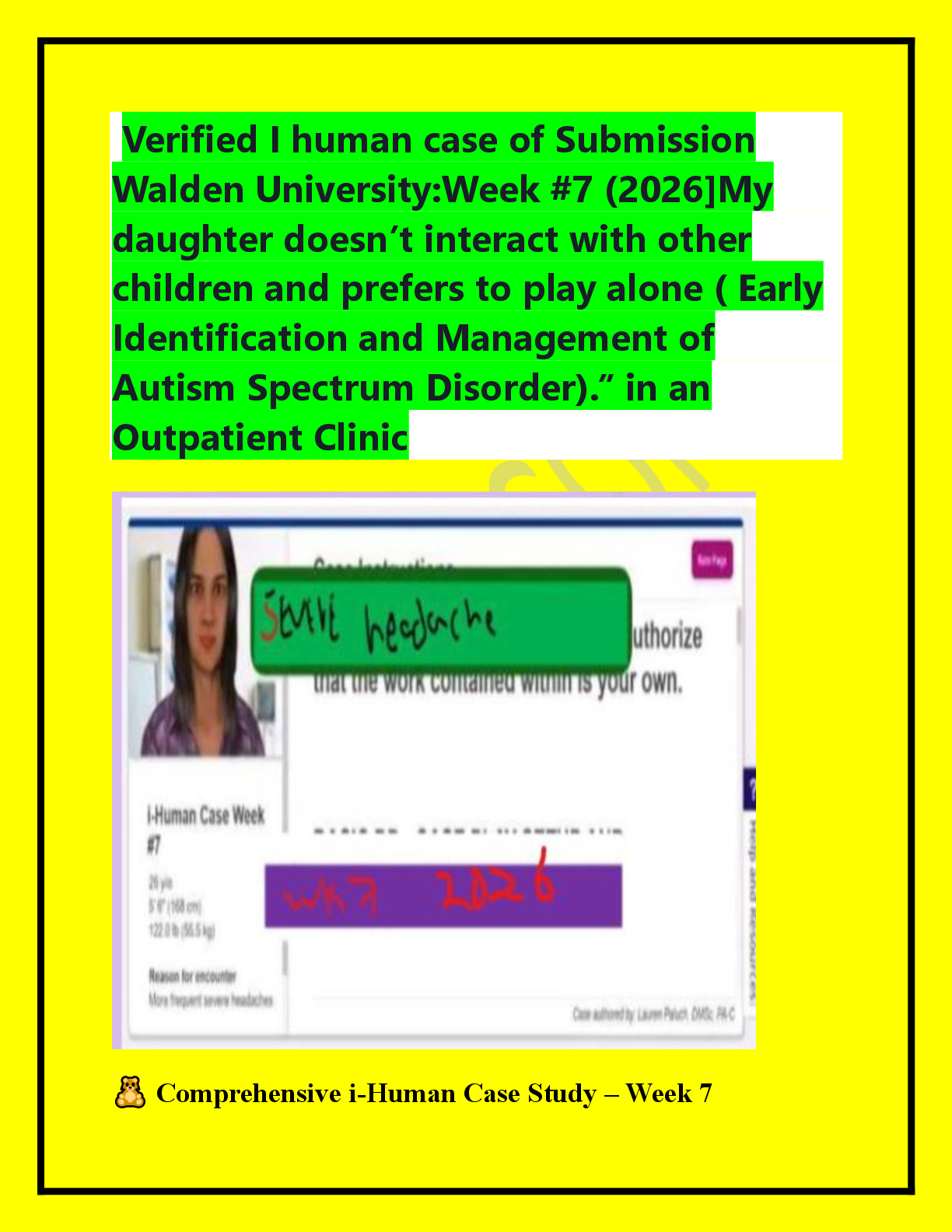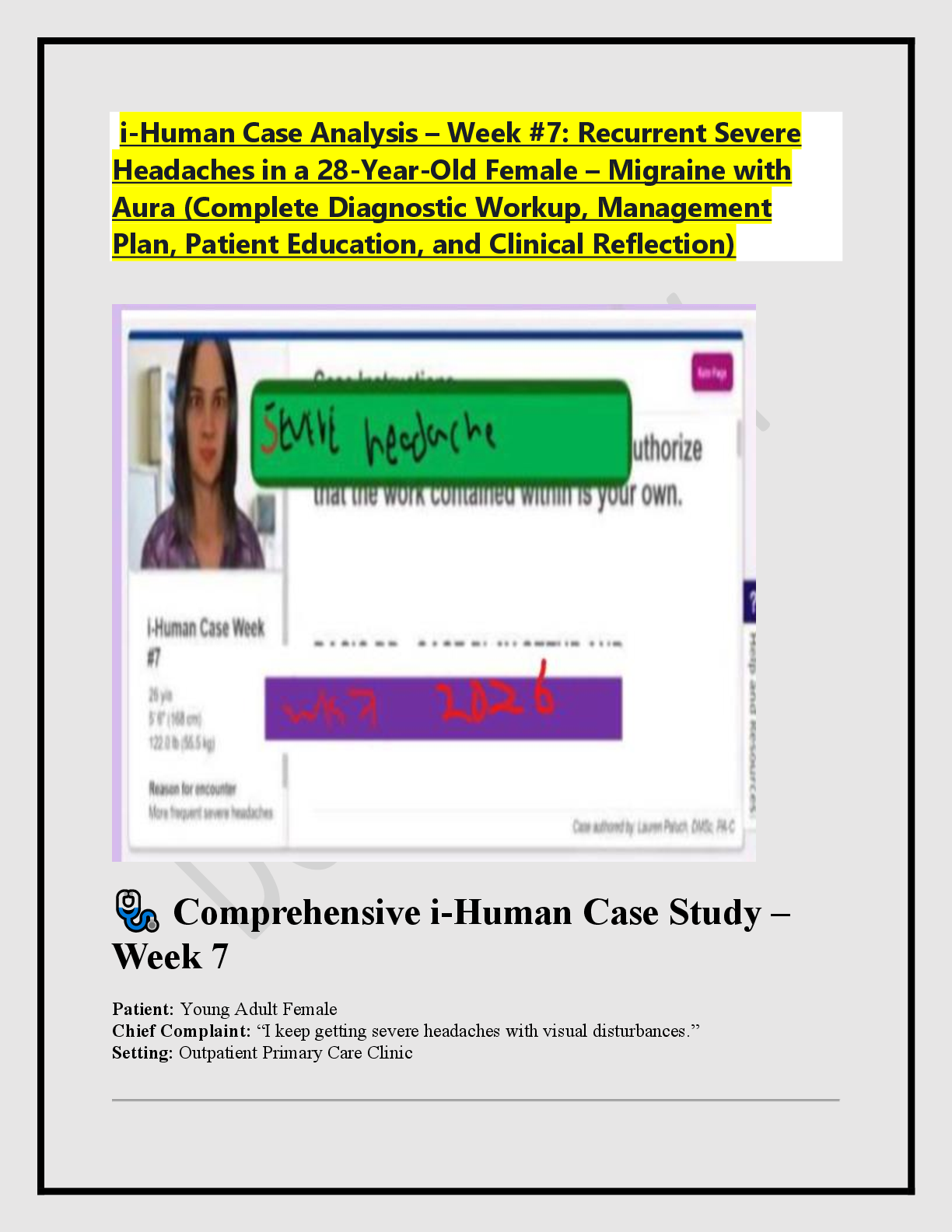Medicine > CASE STUDY > DOCUMENT 115 MED 100% CORRECT SOLUTION SPRING -FALL 2022 LATEST GURANTEED GRADE A+ (All)
DOCUMENT 115 MED 100% CORRECT SOLUTION SPRING -FALL 2022 LATEST GURANTEED GRADE A+
Document Content and Description Below
HIV This article is about the virus. For the infection caused by the virus, see HIV/AIDS. For other uses, see HIV (disambiguation). "AIDS virus" redirects here. For the computer virus, see AIDS ... (computer virus). Human immunodeficiency viruses Scanning electron micrograph of HIV-1 (in green) budding from cultured lymphocyte. Multiple round bumps on cell surface represent sites of assembly and budding of virions. Scientific classification (unranked Virus ): Realm: Riboviria Kingdom: Pararnavirae Phylum: Artverviricota Class: Revtraviricetes Order: Ortervirales Family: Retroviridae Subfamily Orthoretrovirin : ae Genus: Lentivirus Groups included • Human immunodeficiency virus 1 • Human immunodeficiency virus 2 Other lentiviruses • Bovine immunodeficiency virus • Caprine arthritis encephalitis virus • Equine infectious anemia virus • Feline immunodeficiency virus • Jembrana disease virus • Puma lentivirus • Simian immunodeficiency virus • Visna-maedi virus The human immunodeficiency viruses (HIV) are two species of Lentivirus (a subgroup of retrovirus) that infect humans. Over time, they cause acquired immunodeficiency syndrome (AIDS),[1][2] a condition in which progressive failure of the immune system allows life-threatening opportunistic infections and cancers to thrive. [3] Without treatment, average survival time after infection with HIV is estimated to be 9 to 11 years, depending on the HIV subtype.[4] In most cases, HIV is a sexually transmitted infection and occurs by contact with or transfer of blood, pre-ejaculate, semen, and vaginal fluids. Research has shown (for both same-sex and opposite-sex couples) that HIV is untransmittable through condomless sexual intercourse if the HIV-positive partner has a consistently undetectable viral load.[5][6] Non-sexual transmission can occur from an infected mother to her infant during pregnancy, during childbirth by exposure to her blood or vaginal fluid, and through breast milk.[7][8][9][10] Within these bodily fluids, HIV is present as both free virus particles and virus within infected immune cells. HIV infects vital cells in the human immune system, such as helper T cells (specifically CD4+ T cells), macrophages, and dendritic cells. [11] HIV infection leads to low levels of CD4+ T cells through a number of mechanisms, including pyroptosis of abortively infected T cells, [12] apoptosis of uninfected bystander cells,[13] direct viral killing of infected cells, and killing of infected CD4+ T cells by CD8+ cytotoxic lymphocytes that recognize infected cells.[14] When CD4+ T cell numbers decline below a critical level, cell-mediated immunity is lost, and the body becomes progressively more susceptible to opportunistic infections, leading to the development of AIDS. Contents • 1Virology • 1.1Classification • 1.2Structure and genome • 1.3Tropism • 1.4Replication cycle • 1.5Spread within the body • 1.6Genetic variability • 2Diagnosis • 3Research • 4Treatment and transmission • 5History • 5.1Discovery • 5.2Origins • 6See also • 7References • 8Further reading • 9External links Virology Classification See also: Subtypes of HIV Comparison of HIV species Speci es Virulen ce Infectivit y Prevalenc e Inferred origin HIV-1 High High Global Common chimpanzee HIV-2 Lower Low West Africa Sooty mangabey HIV is a member of the genus Lentivirus,[15] part of the family Retroviridae.[16] Lentiviruses have many morphologies and biological properties in common. Many species are infected by lentiviruses, which are characteristically responsible for long-duration illnesses with a long incubation period. [17] Lentiviruses are transmitted as single-stranded, positive- sense, enveloped RNA viruses. Upon entry into the target cell, the viral RNA genome is converted (reverse transcribed) into double- stranded DNA by a virally encoded enzyme, reverse transcriptase, that is transported along with the viral genome in the virus particle. The resulting viral DNA is then imported into the cell nucleus and integrated into the cellular DNA by a virally encoded enzyme, integrase, and host co-factors.[18] Once integrated, the [Show More]
Last updated: 3 years ago
Preview 1 out of 10 pages

Buy this document to get the full access instantly
Instant Download Access after purchase
Buy NowInstant download
We Accept:

Reviews( 0 )
$10.50
Can't find what you want? Try our AI powered Search
Document information
Connected school, study & course
About the document
Uploaded On
May 10, 2022
Number of pages
10
Written in
All
Additional information
This document has been written for:
Uploaded
May 10, 2022
Downloads
0
Views
144

























